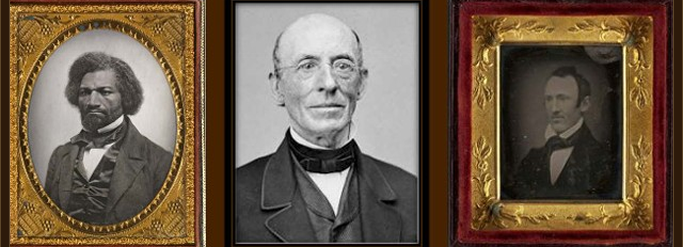|
|
An Exhibit Honoring American Abolitionists, Anti-Slavery Activists and Opponents of Slavery
The exhibit consists of photographs and engravings of historic abolitionists and anti-slavery activists. This list consists of prominent abolitionist leaders and activists. They include African American and Caucasian abolitionists and anti-slavery activists. Prominent among these abolitionists are African American and Caucasian women.
Each of the photographs has a one-paragraph text panel explaining the work of the individual. Where possible, a quote by the abolitionist is included in the text panel.
The exhibit begins in the 18th Century with some of the early colonial American anti-slavery activists. The exhibit ends with the conclusion of the Civil War and the passage of the Thirteenth Amendment, abolishing slavery.
The abolitionists and anti-slavery activists featured in the exhibit were culled from an extensive list that we compiled of prominent abolitionists and anti-slavery activists in colonial Great Britain and the United States. This list included more than 3,000 abolitionists, anti-slavery activists and opponents of slavery. The list was researched and collected from a number of primary and secondary sources, including prominent archives.
Examples of abolitionists and anti-slavery activists to be honored are:
- political leaders and statesmen
- political and social reformers
- members of the diplomatic corps
- philanthropists
- newspaper publishers and editors
- lawyers and jurists
- clergymen and religious leaders
- educators
- authors and poets
- members of the Underground Railroad
- escaped and former slaves who wrote narratives, acted as witnesses and spoke out against slavery
- US military officers
Exhibit Specifications
The exhibit is comprised of framed and matted photographs. The photographs are approximately 11” x 14” in size. They are in 16” x 20” frames. The photographs have been mounted and matted archivally. They are beautifully presented with high quality picture frames. We have used Plexiglas so that the exhibit can be shipped safely.
The photographs have been printed on archival, heavy-weight paper. They have been printed in color, in high resolution. The photographs were scanned at high resolution from original source images. Many of the photographs and engravings are of original, mid-19th Century images.
Exhibit Curator
Eric Saul
With assistance from Amy Fiske
|
|
|
|
Exhibit Venues
Savannah, Georgia
December 2017-January 2018
Sulfur Studios
2301 Bull St.
Savannah, GA 31401
Hours: call for schedule of events
Tel.: 912-231-7105
Email: info@sulfurstudios.org
Currently on exhibit
The Beach Institute African American Cultural Center
502 E Harris St.
Savannah, GA 31401
Hours: Tues.-Sat. 12-5
Tel.: 912-335-8868
Atlanta, Georgia
April 2018
Georgia State Capitol Rotunda
206 Washington St. SW
Atlanta, GA
This exhibit was organized and sponsored by Georgia State Representative Mabel Thomas (District 56), Georgia State Representative Carl Wayne Gilliard (District 162), and Patt Gilliard-Gunn, Center for Jubilee, Reconciliation and Healing, Inc., Savannah, Georgia. Also special thanks to Rosalyn Rouse and Lu Feng, also of Savannah, Georgia.
Please let us know if you are interested in borrowing the exhibit for your venue. Please call Eric Saul at 304-906-1292 or write to visasforlife@cs.com.
Sponsoring Agencies
Center for Jubilee, Reconciliation and Healing, Inc., Savannah, Georgia
Patt Gilliard-Gunn, President
City of Savannah, Georgia
Mason Dixon Civil War Roundtable, Morgantown, West Virginia
Conclusion
The American Abolitionists: Conscience of the Nation exhibit will be an important opportunity to educate individuals about the importance of the abolition and anti-slavery movement in America.
Thousands of men and women devoted their energies and their lives to end slavery in America. Many of these individuals spent a lifetime working to free their fellow Americans. They did it at the risk of their fortunes, their reputations, and even their lives. Some did not even live to see their work come to fruition.
Many of the abolitionists were helping people whom they did not personally know. They were acting according to their conscience in the service of what they believed to be a higher cause.
Yet most of these men and women have been forgotten, except by a few scholars and specialists in the field.
Nonetheless, they left a lasting legacy of courage and determination. We are all the beneficiaries of their work.
Through the exhibit, a small shining ray of light will be focused on a great part of American history.
One might say that the abolitionists were the original Black Lives Matter movement. In some ways, we may argue, their work is yet to be completed.
|
|
|
|
Leaders and Prominent Abolitionists, Anti-Slavery Activists and Opponents of Slavery
This is a sampling of some of the leading abolitionists, anti-slavery activists and opponents of slavery who will be honored in this program. These individuals are from all walks of life and all occupations. They represent both Caucasian and African Americans. Among them are political leaders, newspaper editors, artists, poets, writers, businessmen, and philanthropists. For a more comprehensive illustrated list, click here. |
|
|
|
|
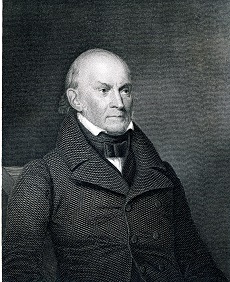
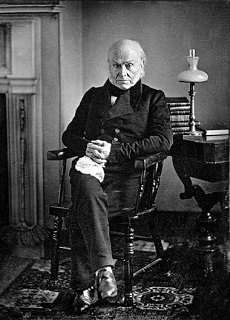
|
ADAMS, John Quincy, 1767-1848, Massachusetts, sixth U.S. President (1825-1829), U.S. Congressman (1831-1848), U.S. Secretary of State, lawyer, anti-slavery political leader, activist, son of second U.S. President John Adams. Opposed the Missouri Compromise of 1819, which allowed the expansion of slavery in southern states. Adams presented 693 anti-slavery petitions to the House of Representatives. Fought against the “Gag Rule” in Congress, which prevented discussion of the issue of slavery in the U.S. House of Representatives. The Gag Rule was revoked in 1844. Opposed the annexation of Texas and the extension of slavery to new territories. Opposed slavery in the District of Columbia. Counsel for the defense of slaves in the Amistad case. In 1841, he argued for the freedom of the slaves on the Amistad ship before the U.S. Supreme Court. He won the case and secured their freedom. Adams declared “that freedom is the natural right of man, and that by the laws of nature, and of nature’s God, an immortal soul cannot be made chattel.” Also stated, “It is among the evils of slavery that it taints the very sources of moral principle. It establishes false estimates of virtue and vice; for what can be more false and heartless than this doctrine, which makes the first and holiest rights of humanity to depend upon the color of the skin?” |
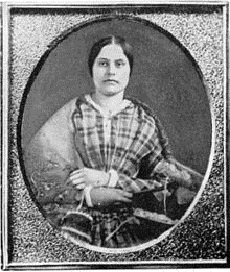 |
ANTHONY, Susan Brownell, 1820-1906, reformer, abolitionist, orator, leader of the female suffrage movement, radical egalitarian, temperance movement leader. Became active in the abolition movement in the mid-1850’s. Member of the American Anti-Slavery Society. Founded Women’s National Loyal League with Elizabeth Cady Stanton in 1863 to fight for cause of abolition, co-founded American Equal Rights Association (AERA) in 1866 to fight for universal suffrage. |
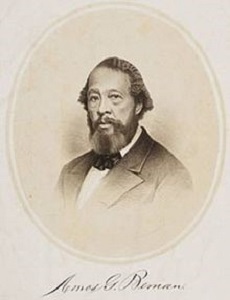 |
BEMAN, Amos Geary, 1812-1874, African American clergyman, abolitionist, speaker, temperance advocate, community leader. Member of the American Anti-Slavery Society 1833-1840. Later, founding member of the American and Foreign Anti-Slavery Society. Traveled extensively and lectured on abolition. Leader, Negro Convention Movement. Founder and first Secretary of Anti-Slavery Union Missionary Society, later organized as the American Missionary Association (AMA), 1846. Championed Black civil rights. Promoted anti-slavery and African American civil rights causes. Worked with Frederick Douglass and wrote for his abolitionist newspaper, The North Star. |
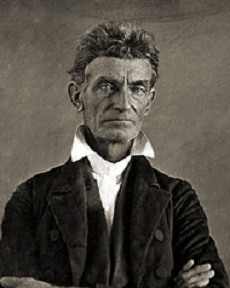 |
BROWN, John, 1800-1859, radical-militant abolitionist leader, wrote Provisional Constitution and Ordinances for the People of the United States (1858). Condemned slavery. In 1855, Brown went to Kansas during the struggle to determine whether it should be a free or slave state. With 23 volunteers, including five African Americans, Brown led a raid against the Federal Arsenal at Harpers Ferry, West Virginia, on October 16, 1859. Three of his sons participated, Oliver, Owen and Watson, as well as brothers of his son-in-law, William and Dauphin Watson. He was captured, tried and convicted and was executed on December 2, 1859 along with four of his co-defendants. He was supported by six prominent abolitionists. They were Thomas Wentworth Higginson, Samuel Gridley Howe, Theodore Parker, Franklin B. Sanborn, Gerritt Smith, and George W. Stearns. They were known as the “Secret Six.” |
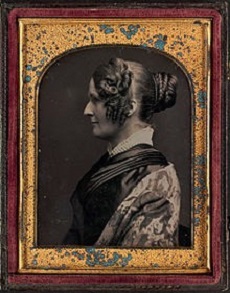 |
CHAPMAN, Maria Weston, 1806-1885, educator, writer, newspaper editor, prominent abolitionist leader, reformer. Advocate of immediate, uncompensated emancipation. Editor of the anti-slavery newspaper The Liberty Bell. Also helped to edit William Lloyd Garrison’s newspaper, the Liberator. Co-founded and edited the National Anti-Slavery Standard. Leader and founder of the Boston Female Anti-Slavery Society (BFASS), which she founded and organized with twelve other women, including three of her sisters. The Society worked to educate Boston’s African American community and to abolish slavery in the District of Columbia. In 1840, Chapman was elected to the executive committee of the American Anti-Slavery Society. She was Councillor of the Massachusetts Anti-Slavery Society from 1841-1865. Her husband was prominent abolitionist Henry Grafton Chapman, with whom she co-edited The National Anti-Slavery Standard in New York. |
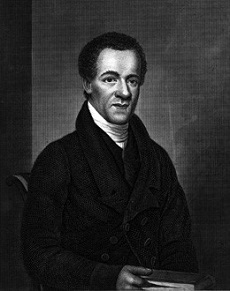 |
CORNISH, Reverend Samuel E., 1795-1858, free African American, New York City and Philadelphia, Pennsylvania, abolitionist leader, clergyman, publisher, journalist. Published The Colonization Scheme Considered and its Rejection by Colored People and A Remonstrance Against the Abuse of Blacks, 1826. Cornish was co-editor of the Freedom’s Journal, the first African American newspaper. Editor, The Colored American, 1837-1839. Leader and founding member of the American Anti-Slavery Society. In 1840, joined the American and Foreign Anti-Slavery Society and served on the Executive Committee, 1840-1855. |
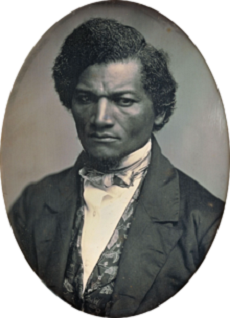 |
DOUGLASS, Frederick, 1817-1895, African American, escaped slave, author, diplomat, orator, radical abolitionist leader. Began his abolitionist career as an agent of the Massachusetts Anti-Slavery Society. Published and edited The North Star abolitionist newspaper in Rochester, New York, for 17 years. Wrote Narrative of the Life of Frederick Douglas: An American Slave, in 1845. Also wrote My Bondage, My Freedom, 1855. Actively supported women’s rights and suffrage. Recruited soldiers for the African American regiments in the Union Army during the Civil War. During Reconstruction, Douglass worked for civil rights and suffrage for African American men. |
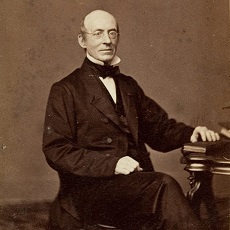 |
GARRISON, William Lloyd, 1805-1879, journalist, major abolitionist leader. Early in his career, he supported colonization and gradual emancipation. He later changed his views to adamantly oppose colonization. Co-founder of the American Anti-Slavery Society, December 1833, and the New England Anti-Slavery Society. Co-editor of anti-slavery newspaper, Genius of Universal Emancipation, in 1829. Supported cause of uncompensated immediate abolitionism. Viewed slavery as highly immoral and sinful. Promoted full citizenship and rights for African Americans. Founder, editor, The Liberator, weekly newspaper founded in 1831, published through December 1865. After the passage of the 13th Amendment, ending slavery, Garrison closed The Liberator and promoted the issues of women’s suffrage and rights for Native Americans. |
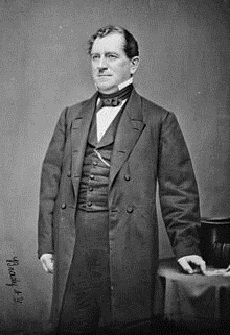 |
GIDDINGS, Joshua Reed, 1795-1865, statesman, U.S. Congressman, Whig from Ohio, elected in 1838. First abolitionist elected to House of Representatives. Worked with Congressman and former President John Quincy Adams to eliminate “gag rule,” which prohibited anti-slavery petitions from being submitted to Congress. He resigned from Congress after being censured for his stance against slavery. His district supported his policy, and Giddings was reelected to the U.S. House of Representatives, serving until 1859. He opposed Fugitive Slave Act of 1850 and the further expansion of slavery into the new territories acquired after the Mexican War of 1846. In 1848, he left the Whig party and affiliated himself with the newly established anti-slavery Free Soil party. Giddings opposed the Kansas-Nebraska Act of 1854. Leader and founder of the Republican Party. Argued that slavery in territories and District of Columbia was unlawful. Active in Underground Railroad. Giddings worked with other anti-slavery Congressmen forming an unofficial select committee on slavery. These representatives included: Seth M. Gates, Sherlock J. Andrews, and William Slade. Giddings supported Republican Presidential candidates John C. Frémont in 1856 and Abraham Lincoln in 1860. |
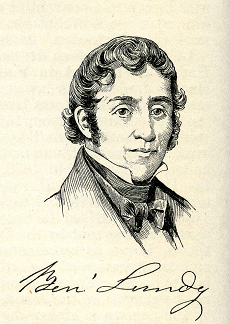 |
LUNDY, Benjamin, 1789-1839, philanthropist, Society of Friends, Quaker, radical abolitionist leader, anti-slavery author and editor. Lundy was one of the most important early abolitionists. Lundy was one of the first abolitionists to publish anti-slavery periodicals and give anti-slavery lectures. He was also among the first to create societies that would encourage people to buy products produced by free labor. He was a founding member and officer in the American Anti-Slavery Society. Organized the anti-slavery Union Humane Society, St. Clairsville, Ohio, in 1816, and wrote anti-slavery articles for the Philanthropist newspaper in Mount Pleasant, Ohio. In 1821, he founded and published the newspaper, Genius of Universal Emancipation, in Greenville, Tennessee. It was circulated in more than 21 states and territories, including slave states. He was a member of the Tennessee Manumission Society. In 1825, Lundy travelled to Haiti to negotiate with government officials to see if freed slaves in the United States could settle there. In August 1825, he founded the Maryland Anti-Slavery Society, which advocated for direct political action to end slavery. He lectured extensively and helped organize numerous anti-slavery groups in the Northeast. Lundy supported establishing colonies of freed slaves in Mexico. In the winter of 1829, he was badly beaten and almost killed by a slaveholder who accused him of libel. In 1836, published The National Enquirer and Constitutional Advocate of Universal Liberty, a weekly paper. In 1837, co-founded the Pennsylvania Anti-Slavery Society. In 1838, his property was destroyed by a fire set by a pro-slavery mob. |
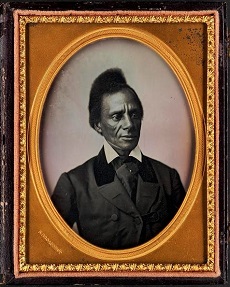 |
REMOND, Charles Lenox, 1810-1873, orator, free African American. Agent for the Massachusetts Anti-Slavery Society. First Black abolitionist employed as spokesman in anti-slavery cause (in 1838). Member of the Executive Committee and Manager of the American Anti-Slavery Society, 1843-1853. Attended the World Anti-Slavery Convention in London in 1840. Lectured with Frederick Douglass on abolition. Recruited African American soldiers for the Union Army. |
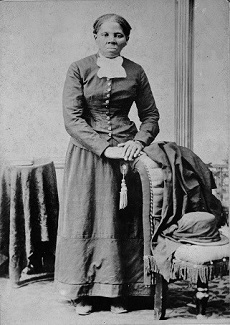 |
TUBMAN, Harriet, 1822-1913, Maryland, African American, abolitionist, leader of the Underground Railroad, orator, Civil War Scout and nurse. Member of the Troy Vigilance Committee. Tubman was enslaved from her birth. After being threatened to be sold in 1849, she escaped to Philadelphia. She began her mission as a guide in the Underground Railroad in December 1850. In the 1850s, she made 19 trips through Maryland, aiding fugitive slaves escaping to the North and to Canada. She aided an estimated 300 fugitive slaves, none of whom was ever recaptured. She often worked alone in her rescue activities. Her success resulted in a $40,000 bounty on her head. She was an advisor to radical abolitionist John Brown. In the spring of 1862, she volunteered for the Union Army as a Scout and a spy, often travelling behind Confederate lines. After the war, she moved to Auburn, New York, and worked with older former slaves and orphans. She also worked to support freeman’s schools and worked for women’s right to vote. In 1897, she was awarded a pension of $20 a month by Congress for her wartime service. |
|
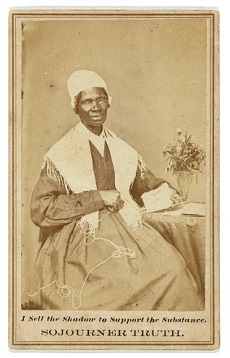
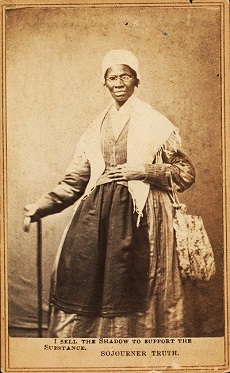
|
TRUTH, Sojourner (Isabella Baumfree), 1797?-1883, African American, anti-slavery activist, abolitionist, women’s rights activist. Truth, born as Isabella Baumfree, was born into slavery. She was treated harshly by her owner. Her father died of neglect. Two of her daughters, and all but one of her siblings, were taken away from her and sold. In 1827, she escaped with the aid of local Quakers. She was able to sue for the freedom of her son, Peter. This was one of the first cases of a Black woman successfully winning a suit against a White man. Around 1829, Truth moved to New York City. In 1843, she was inspired to rename herself Sojourner Truth. That year, she went on a religious mission, traveling through Long Island and Connecticut. Also that same year, she learned about the abolitionist movement. She became a member of the Northampton, Massachusetts, Association of Education and Industry, an egalitarian community. Through this community, she met abolitionist leader William Lloyd Garrison and African American abolitionist Frederick Douglass. She was so eloquent that abolitionist leaders sponsored her on a speaking tour. Beginning in 1850, she also began speaking at women’s rights conventions, becoming a leader in the women’s rights movement. Around 1850, she moved to Salem, Ohio. She used the offices of the Anti-Slavery Bugle as a center. She then traveled to Indiana, Kansas and Missouri. Wrote The Narrative of Sojourner Truth: A Northern Slave, 1850. She was able to sustain herself by selling copies of her slave narrative. She was attacked by pro-slavery advocates in Kansas and Missouri. By the mid-1850s, she traveled to Battle Creek, Michigan. During the Civil War, she recruited African American soldiers for the Union Army as well as working to see for their care. On October 29, 1864, Truth met President Abraham Lincoln in the White House. She stayed in Washington for two years, assisting freed slaves. In December 1864, she was appointed counselor for the National Freedman’s Relief Association. After the war, she protested the segregation of streetcars in Washington, DC. It was the first sit-in protest. In March 1870, she met President Ulysses S. Grant to petition the federal government to establish a state for freed slaves. In 1867, Truth began working for the American Equal Rights Association, which sought suffrage in New York for women and African Americans. |
|
|
|
|
